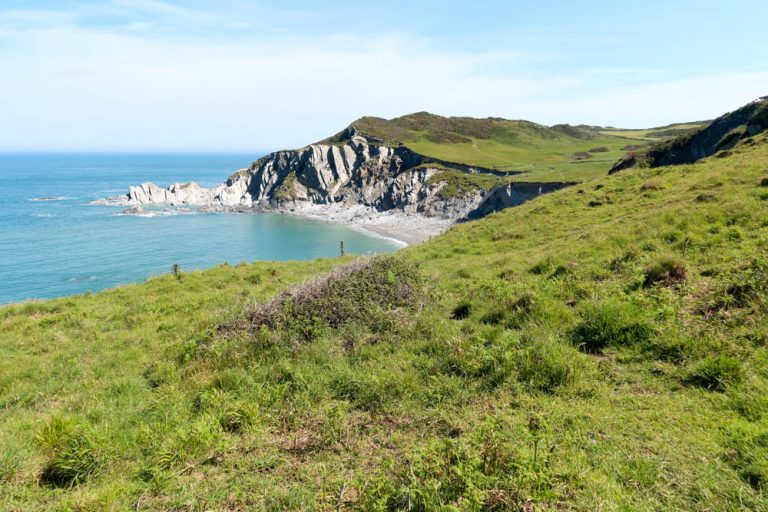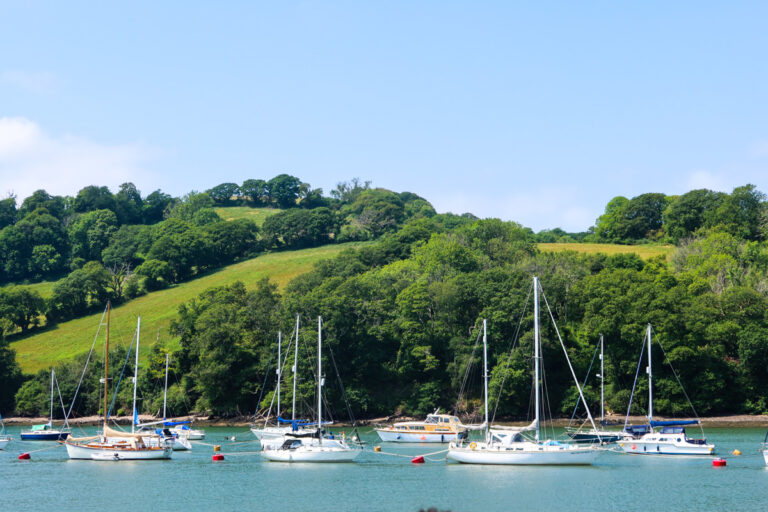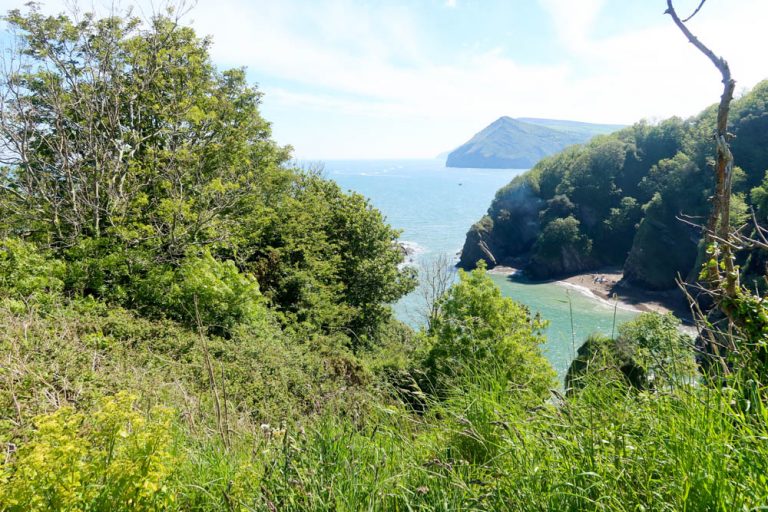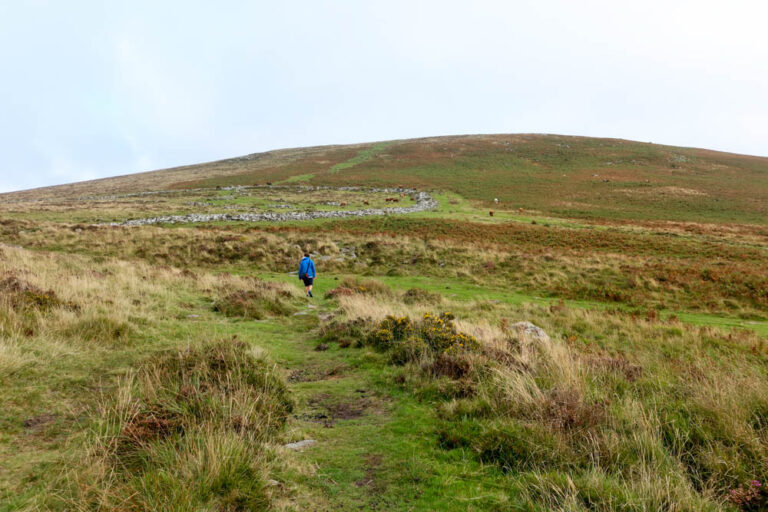40 Best Places to Visit in Devon (by a local!)
There are so many unique places to visit in Devon.
This county is known for its almost tropical-like beaches and two epic moors, but there are also countless charismatic towns and two very different but equally dynamic cities.
So, where do you begin when working out where to go in Devon?
I’m a local to the county (I live in Exmouth) and I’ve created this blog post to break it down for you!
In this post, you’ll see a description of all of my favourite places in Devon, and you’ll be able to click through to read more about each destination – as I’ve wrote full blog posts about most of them.
So, if you’re wondering where to go on holiday in Devon, you could base yourself in any of the places I mention below and visit other destinations in the area on day trips.
What are the best places to visit in Devon?

There are some obvious top places to visit in Devon, and thousands of other hidden gems.
Being an Exmouth local, I wax lyrical about the town and the Devon Jurassic Coast in East Devon.
Up the river, you’ll find the ancient city of Exeter, where history’s at every step.
Just outside of Exeter, (to the northwest), the rolling moorland of Dartmoor begins. To the northeast of the city, you’ll find charming mid-Devon towns like Honiton and Tiverton and the jaw-droppingly beautiful Blackdown Hills.
South of Dartmoor, there’s Torbay, historically one of the UK’s most popular beach holiday destinations and nowadays a family-friendly spot that’s jam-packed with attractions. Or, visit smaller towns like Salcombe, Dartmouth and inland Totnes, before Plymouth, Devon’s biggest city.
Known as the UK’s Ocean City, Plymouth boasts fascinating maritime heritage and the oldest continously operating gin distillery in the world!
Heading north, you’ll find the North Devon World Surfing Reserve, which encompasses spots like Westward Ho!, Saunton Sands, Croyde and Woolacombe (once voted 13th best beach in the world). Charming villages like Clovelly and Appledore are dotted around the sparsely-populated region, along with larger harbour towns like the quaint Ilfracombe.
Devon then spills into Exmoor National Park, which straddles the Somerset border. On the Devon side, you’ll find the chilled-out town of Combe Martin and Lynton and Lynmouth, which are home to the Valley of Rocks and the cliff railway.
So, are you ready to find the best place in Devon for your holiday? Read on, and I’ll go into all of these destinations in more detail!
Best places to visit in Devon
As a Devon local, here are my top 40 places in Devon that I’d wholeheartedly recommend anyone to visit!
I live in Exmouth in East Devon, but I have visited all of these destinations countless times and have blog posts on most of them.
This list starts in the East Devon and works its way along South Devon to Plymouth, then up to the North Coast and terminates in mid-Devon, close to the Somerset and Dorset borders.
1. Exeter
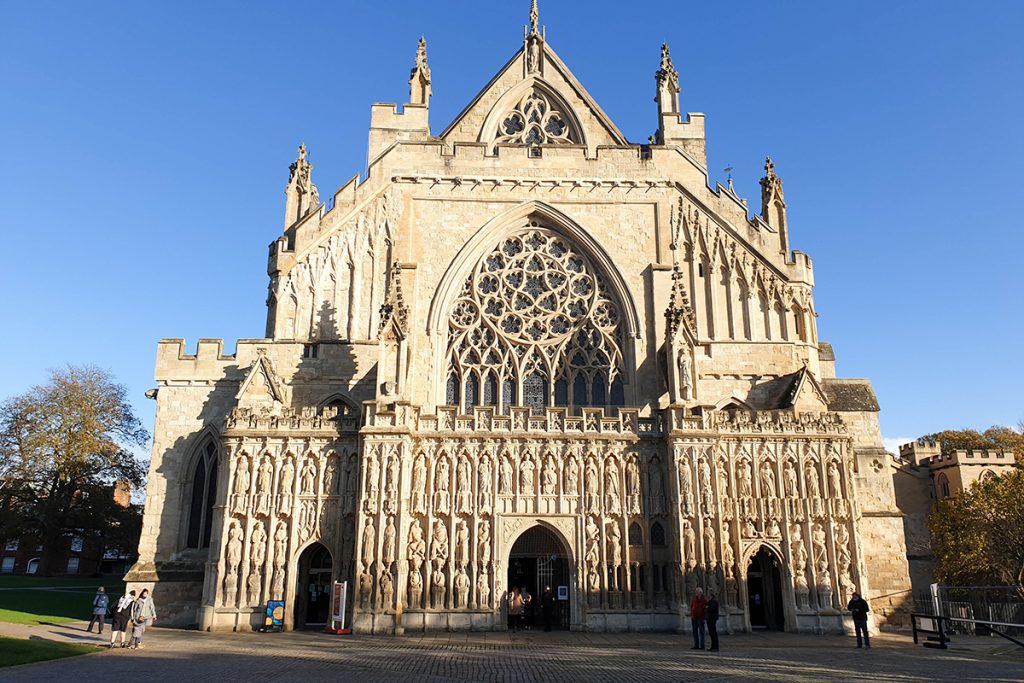
A city bursting with historical hidden gems, Exeter has plenty of stories to tell.
Originating as a Roman city, there are still Roman walls (and a Roman Bathhouse that hasn’t yet been excavated!).
Exeter Cathedral is the main landmark of the city, with a fascinating history spanning over 1100 years.
The city suffered a lot in the Exeter Blitz, with many of its historic buildings destroyed and countless lives lost.
In the centre, you’ll find curious Medieval houses wedged between 1960s buildings – and each of the historic buildings seems to have a story to tell!
While a lot of Exeter’s streets are lined with post-war buildings, the Medieval row of houses bordering Cathedral Green still remains intact (as is the cathedral, of course) and the Quayside remains well-preserved, many buildings echoing stories of the city’s heyday, the bright blue waters of the Exeter Canal running through.
The best things to do in Exeter include exploring the city on a red coat guided tour, venturing into the underground passages and learning about their Medieval importance, gin tasting or distilling at Quayside Distillery, renting kayaks, canoes or SUPs with Saddles & Paddles and exploring Exeter Canal, soaking in St Sidwell’s Point spa, the first Passivhaus spa in the country or heading to the rugby (or the football – I’m an Exeter city supporter – and seeing some live sport!
Or, read about how to spend a weekend in Exeter here.
2. Exmouth

Sitting just 11 miles south of Exeter, where the River Exe meets the sea, is the buzzing beach town of Exmouth – a two-mile-long stretch of sand that connects the Exe Estuary to the red rock of the oldest part of the Jurassic Coast.
Exmouth offers a varied banquet for nature lovers, with golden sands stretching for two miles, the beginning of the Jurassic Coast (England’s only natural UNESCO World Heritage Site), the vibrant Exe Estuary and even brooding moorland.
In fact, I love Exmouth’s nature so much that I decided to move here!
Exmouth Beach is expansive and easy to access, with golden sands as far as the eye can see.
You can walk through the estuary and admire the riverside views or take the East Devon Way through the moors.
Or, climb up the cliffs at the eastern end of the beach – and you’re on the world-class Jurassic Coast. There are some excellent walks around here, or you could head to Sandy Bay, one of the best Exmouth beaches.
You can also take boat trips around the Jurassic Coast or up the River Exe with Stuart Line Cruises.
And, when you’re hungry, Exmouth has a variety of excellent restaurants serving up local and international fare.
You can see my full Exmouth travel guide here or click here for the best things to do in Exmouth.
3. The Exe Estuary
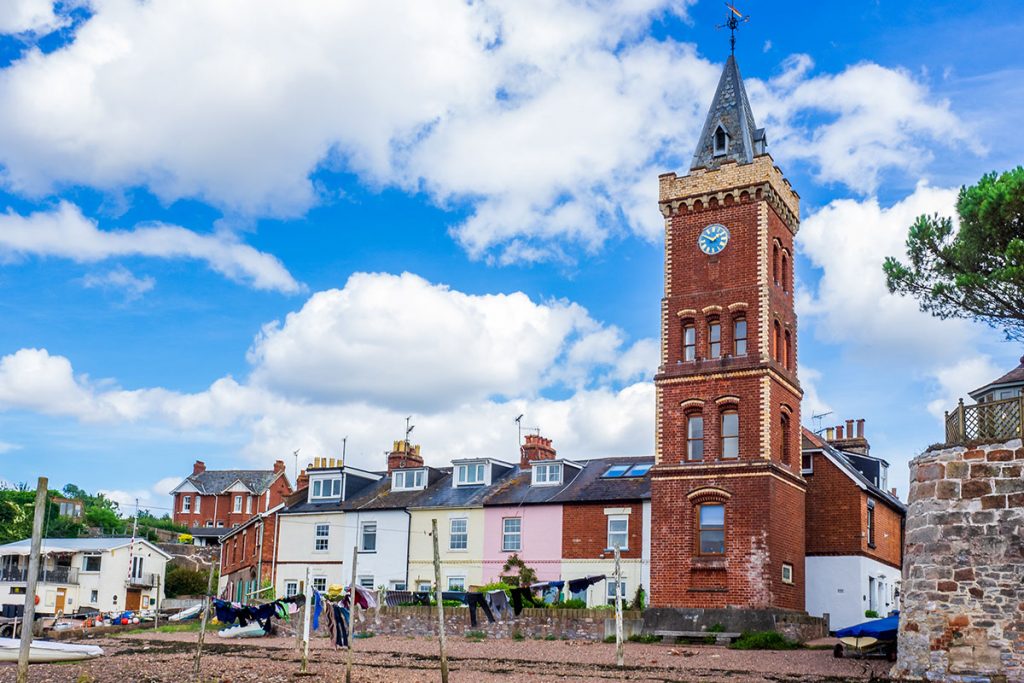
Connecting Exeter with Exmouth on one side and Dawlish Warren on the other, the Exe Estuary is a network of villages and points of interest, but the entire river remains one of the best places to visit in Devon for the sheer riverside beauty and array of fascinating attractions.
It’s worth spending a day on your Devon itinerary driving, cycling, hiking or taking the train up and down the Exe Estuary, visiting all of the river’s best spots!
Don’t miss the tidal beach at Lympstone, Topsham Museum which details the small town’s fascinating history as a port, the beautiful Exminster Marshes, Powderham Castle which is still the home of the noble Courtenay Family, the pretty village of Starcross and the popular seaside resort Dawlish Warren!
See my post about the Exe Estuary for more information.
4. Budleigh Salterton
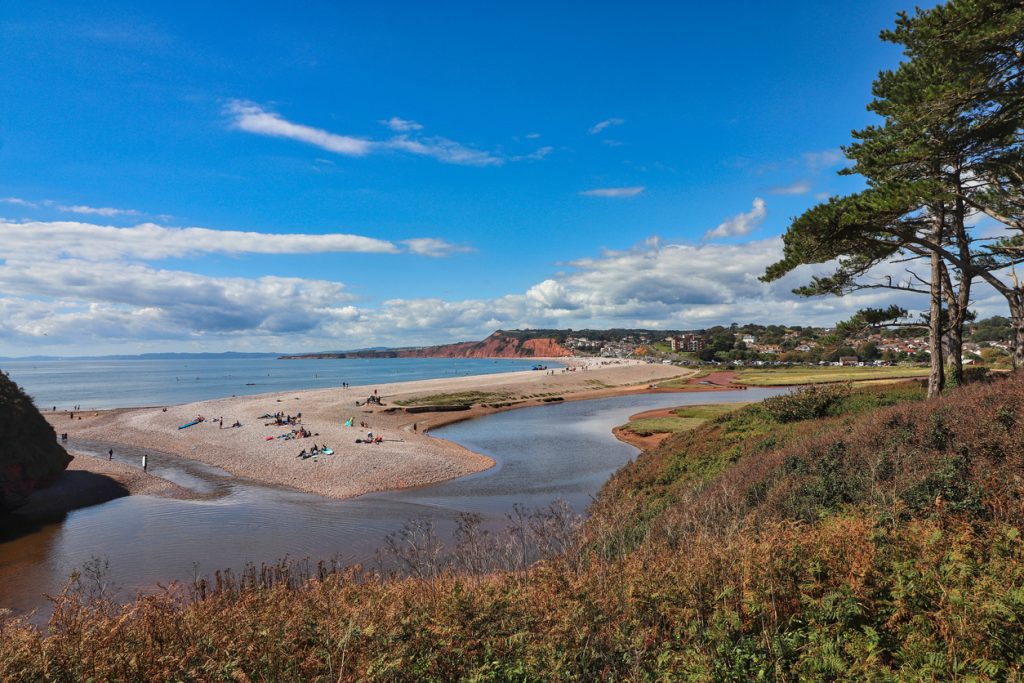
Sitting just to the east of Exmouth (check out my hiking guide between the two towns!) Budleigh Salterton is the first (or last, depending on which way you look at it!) town on the Jurassic Coast.
It has a pebble beach (which makes it usually a lot quieter than Exmouth Beach!), perfect for hiking or enjoying an oceanfront lunch (I love the Longboat Cafe).
The town centre has a range of independent shops and museums like the Fairlynch Museum and Arts Centre.
You can also walk up the River Otter to Otterton, looking out for the resident beaver population on the way, and visit Otterton Mill – or hike along the South West Coast Path to Ladram Bay. Here’s my hiking guide for a loop walk around Exmouth, Budleigh and Otterton.
5. Sidmouth

Sidmouth, further east along the coast, is a holiday-focused town with soaring Jurassic cliffs and Victorian-style hotels and holiday properties.
From the clifftops, you’ll take in epic coastal views and you can enjoy the incredible surrounding countryside – Sidmouth is in the East Devon AONB.
In town, check out Connaught Gardens, enjoy the many oceanfront pubs and restaurants and head just outside of the town to visit the nearby Donkey Sanctuary, housing hundreds of rescued donkeys.
Check out my full guide to Sidmouth for more information about this seaside town!
6. Beer
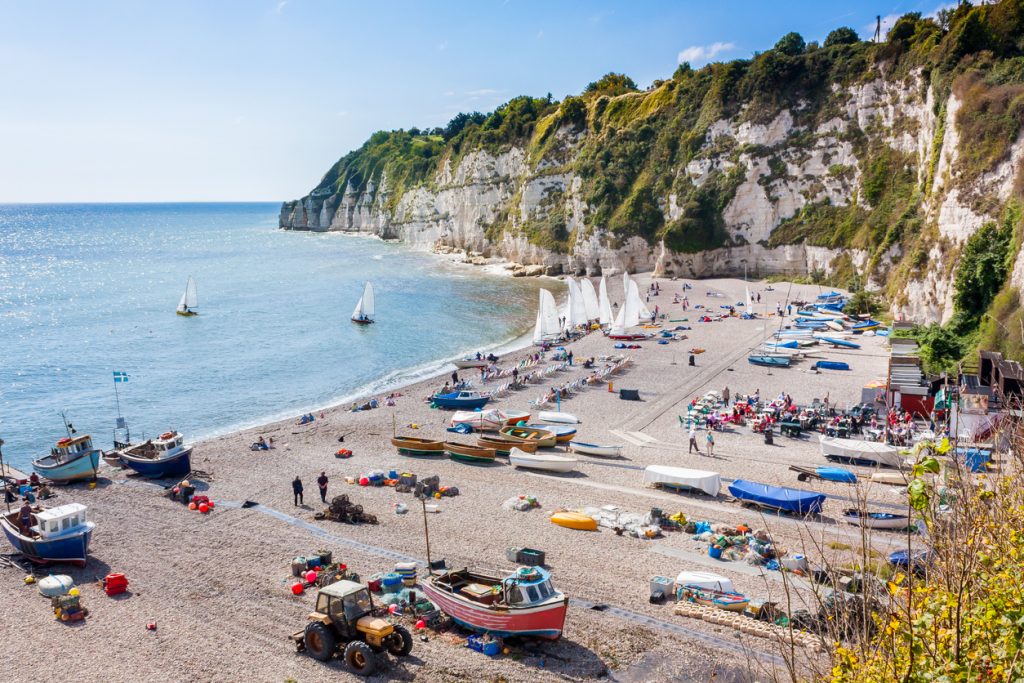
No, it’s not the home of the drink – although by all means, you can pop into a pub and have a beer in Beer!
Beer’s a charming town with a shingle beach that’s bookended by limestone cliffs, which are typical of this part of the Jurassic Coast.
The South West Coast Path walking route to Branscombe is popular, and Beer is also home to Pecorama, a family-friendly attraction with gardens and model trains.
Also, don’t miss the Beer Quarry Caves – these human-made were caves originally used for mining limestone, but then turned into smugglers’ hideaways!
7. Branscombe
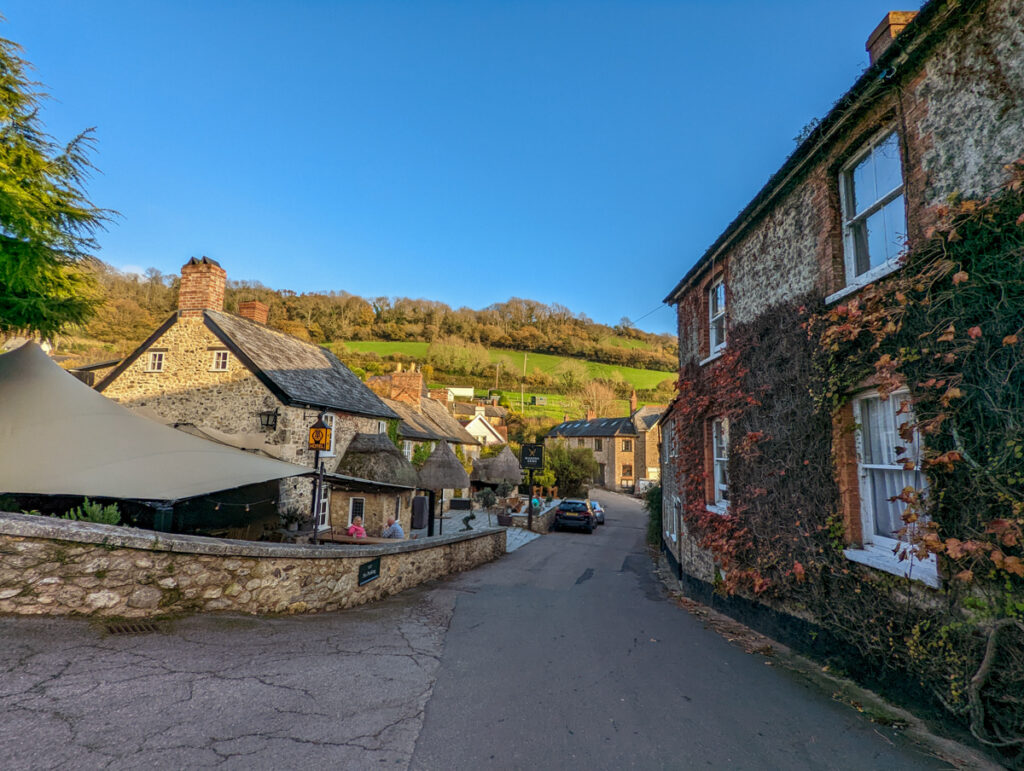
The drive down to Branscombe may be hair-raising – on my last trip there, I got impossibly lost in the single-track country roads before finally making my way to the village – but the rustic cottages and beautiful beachfront make it a must-visit on your Devon bucket list.
It’s renowned for rows of thatched cottages and rolling countryside in the background, along with steep cliffs backing the beach!
In the village, you can check out The Old Forge, have a hearty slice of cake in The Old Bakery, see the quaint St Winifred’s Church and dine in The Mason’s Arms, a 14th century inn.
Branscombe is rumoured to be the longest village in the UK; most of the houses and businesses are along one road, which stretches a mile in length.
Check out my full guide to the best things to do in Branscombe by clicking here!
8. Seaton
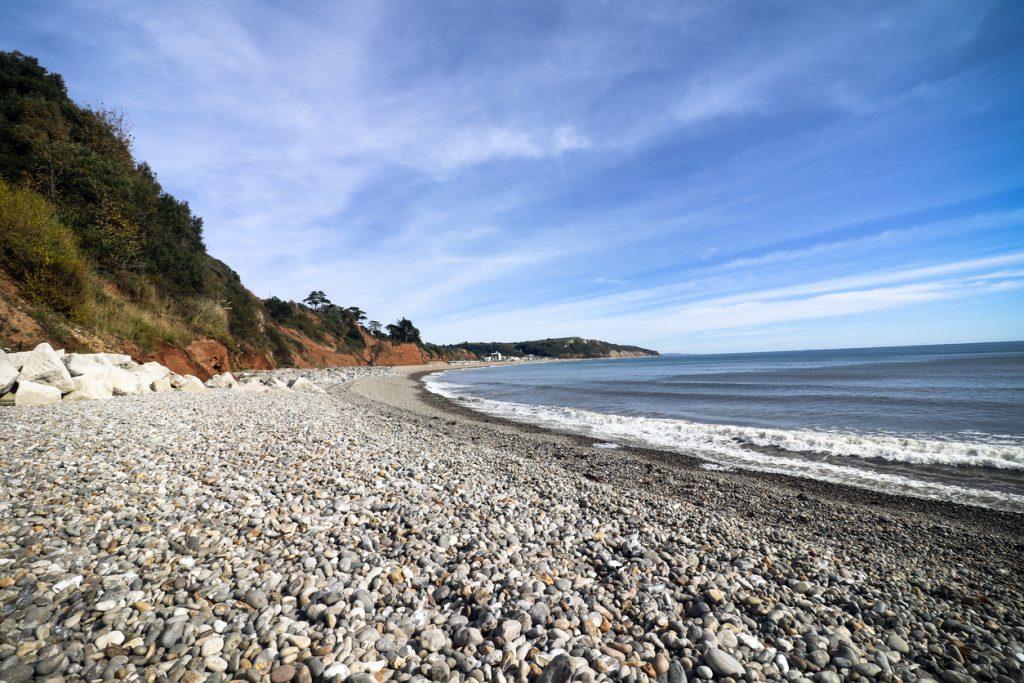
A stone’s throw from the Dorset border (about a 15 minute drive to Lyme Regis), Seaton is a popular East Devon town with a pebbled beach, bright red cliffs and calm sheltered waters.
Head out on the sea with a kayak or paddleboard, hike the South West Coast Path into Dorset, or enjoy Seaton’s fabulous attractions.
Explore the Seaton Wetlands Nature Reserve which runs alongside the River Axe and admire the marshland and reedbed – plus find the four bird hides to look out for birds in!
Or if you want to explore the Axe Valley in a unique way, climb on board the Seaton Tramway, a narrow-gauge heritage tramway.
There’s also the Axe Valley Wildlife Park, a small zoo located in nearby Axminster.
9. Blackdown Hills
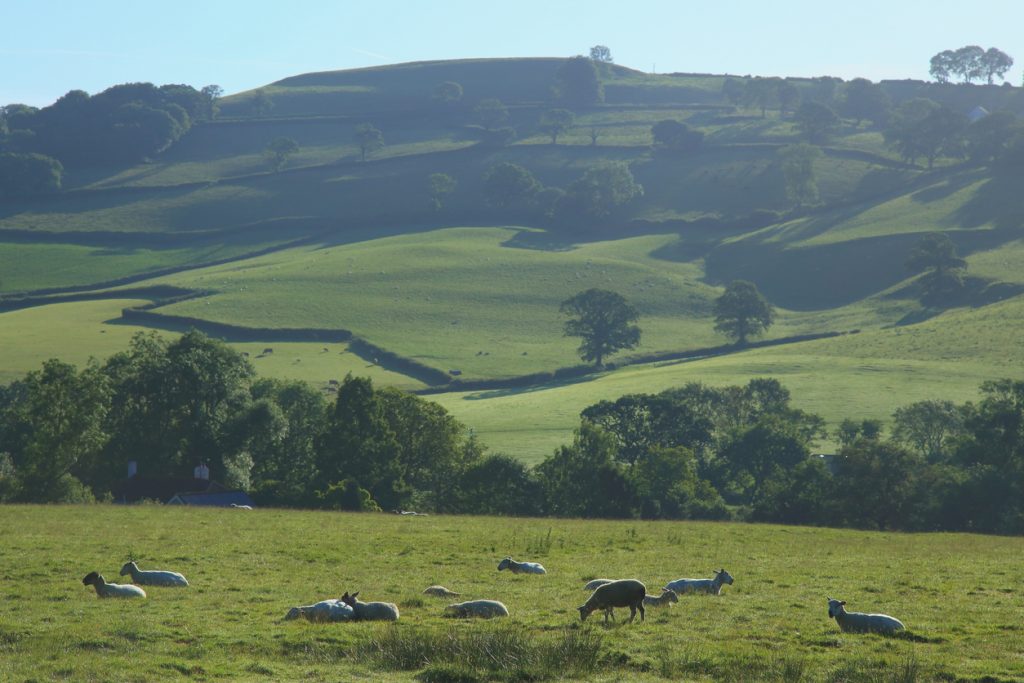
Let’s move on to a hidden gem!
The Blackdown Hills AONB on the Somerset border offers stunning hiking and cycling trails, and breathtaking natural beauty.
Unlike busy parts of Devon, it’s the perfect place for secluded woodland walks and awe-inspiring views.
I always drive through the Blackdown Hills on my way back to Devon when I visit London and places in the South East; and I’m always mesmerised by how beautiful they are.
I’d recommend heading to Honiton if you want to explore the Devon portion of the Blackdown Hills; the AONB’s official website has some great walks and rides to enjoy, some of them leaving from Honiton.
10. Honiton
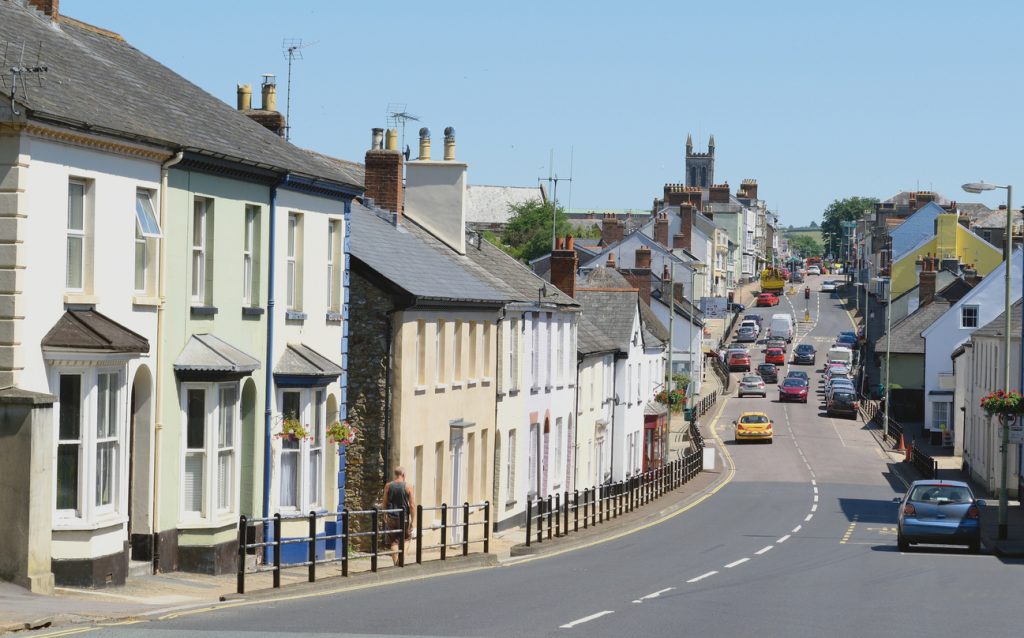
Discover Honiton, a historic market town nestled in the heart of East Devon!
Not a typical tourist hotspot, it offers a true taste of local East Devon life.
If you’re interested in textiles, you’ll love exploring the Allhallows Museum, which tells the story of Honiton Lace and its significance to the region.
And don’t miss the Honiton Farmers Market, held three times a week, where you can sample delicious local produce and learn about farming in the South West!
11. Dawlish

Traditional yet timeless, Dawlish is a resort town with a lovely sandy beach that dates back to the Victorian era.
Dawlish is famous for being the home of the black swans – you’ll find them swimming on Dawlish water – and it’s also home to a myriad of cosy eateries and pubs, with a lovely small-town atmosphere.
My favourite is the friendly Annie’s Tea Room, where I recently fuelled up with a Devon cream tea (cream on first, remember!), while hiking from Teignmouth.
Nearby Dawlish Warren is a seaside resort, with powdery white sand and safe swimming waters – it’s one of Devon’s Blue Flag Beaches, a prestigious award which is given to the cleanest beaches in the UK.
Dawlish is also home to one of the most scenic railways in the country; hop on board and take the short train to Dawlish Warren to experience it!
Check out more things to do in Dawlish here.
12. Teignmouth
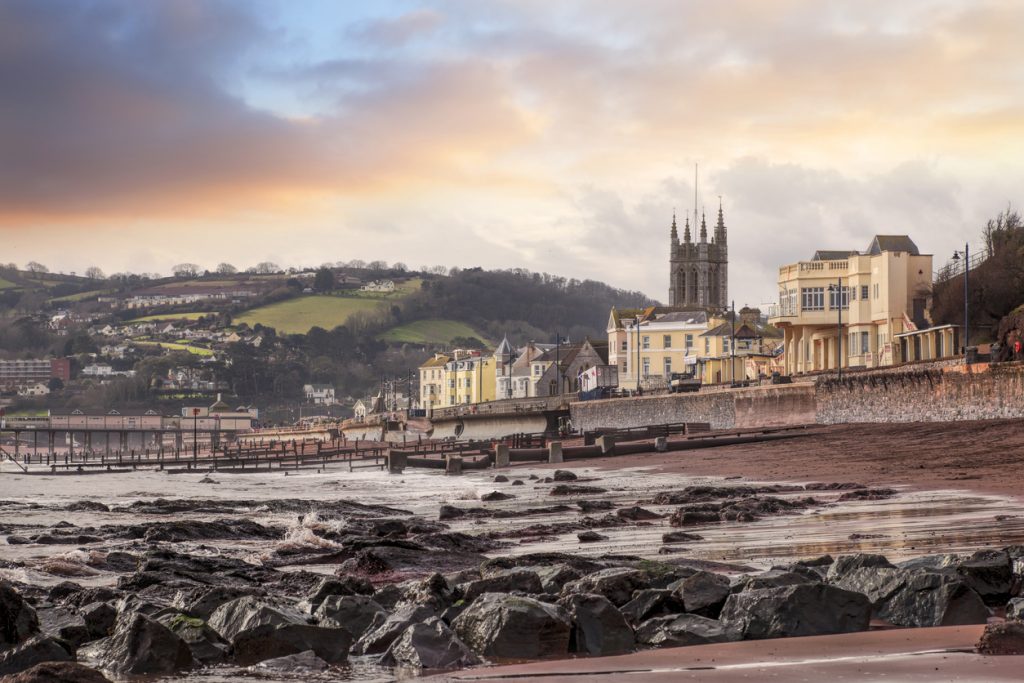
A quiet beach town on the south coast of Devon, Teignmouth (pronounced ‘tinmuth’) is often overshadowed by neighbouring Torbay.
But the town has plenty to offer: a the Grand Pier is now home to several amusement arcades, spanning over Teignmouth Beach which is a family-friendly bay with a pier and other attractions, and there’s a lido for those days when the sea is too cold!
Walk down the charming backstreets of Teignmouth (past Keats House, where John Keats once stayed) to Teignmouth River Beach, which is a popular spot for fishing.
From here, you can take a boat to Shaldon (which is allegedly the oldest ferry in the country, dating back to at least 1296).
Shaldon is a small fishing town with some beautiful waterfront pubs – I love the Ferry Boat Inn.
However, the main reason to go to Shaldon is to find the smuggler’s tunnel to Ness Cove Beach, a hidden cove that not many tourists know about – but it’s definitely one of my favourite beaches in Devon.
Here are the best things to do in Teignmouth and nearby Shaldon.
13. Torquay
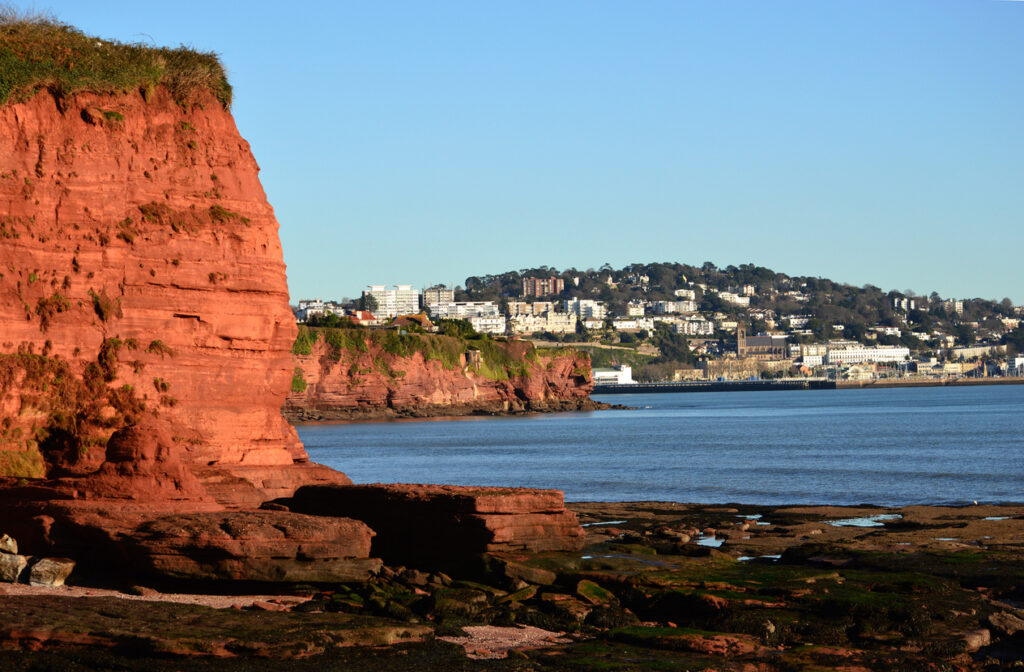
Along from Teignmouth, you’ll find the area of Torbay. This is a region that encompasses three towns – Torquay, Paignton and Brixham.
The biggest town in the area, Torquay is ever-popular with tourists.
The town centre of Torquay can feel a little run-down, but the town does encompass some impressive family-friendly attractions, and there’s a collection of stunning palm-lined beaches on the outskirts.
In town, you’ll find Kent’s Cavern Caves – the oldest cave system in the UK (at about 500,000 years old!) and a scheduled ancient monument and site of special scientific interest.
You can do a tour of the caves to learn about their geology, the animals that have lived in the cave and their uses over the millenniums.
If you fancy a stroll away from the coast, head to the picturesque parkland of Cockington Country Park.
Or, if it’s raining when you’re in Devon, head to Bygones which is an immersive museum of historic memorabilia.
Torre Abbey is also well worth visiting; it’s a Medieval monastery-turned-museum.
Of course, no visit to Torquay is complete without a day spent on the sandy beaches, with Meadfoot Beach, Babbacombe Beach, and Torre Abbey Sands being the most popular.
See all of the best things to do in Torquay here.
14. Paignton
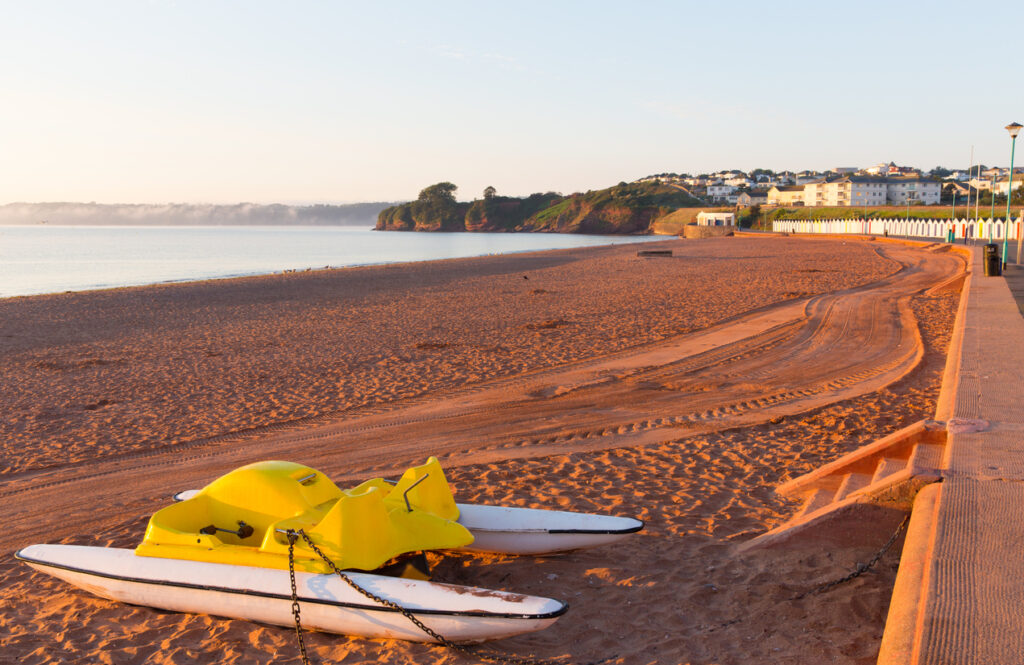
Paignton and Torquay sit right next to each other, and kind of merge into one when it comes to attractions and things to do.
Like Torquay, Paignton’s been popular with tourists since Victorian times when the railway was built and is famous for its long sandy beaches, which are great for rock pooling and bustling holiday atmosphere.
Also like Torquay, it’s not my favourite place in Devon, but there’s no denying that the range of attractions, particularly family-friendly attractions, in this part of Devon is exemplary.
Along with Torquay’s attractions, Paignton also boasts Splashdown Quaywest, the UK’s biggest all-outdoor waterpark. I reviewed it (very honestly) here – it’s not my favourite place in Devon, but I can see its appeal to families.
Goodrington Sands, the beach that Splashdown Quaywest is on, is lovely and you could definitely pass away a sunny afternoon here!
Check out all of the best things to do in Paignton by clicking here.
15. Brixham

Brixham’s a little quieter than Torquay and Paignton, but it’s a must-visit if you want to learn more about Devon’s maritime connection and the seafood industry.
Home to one of the largest fishing fleets in the UK, Brixham is a working port. While that gives it more of an industrial feel than other spots in South Devon, it offers a fascinating glimpse into local life.
There are quite a few maritime-related things to do in Brixham, including the Golden Hind Museum Ship which is a replica of Sir Francis Drake’s famous ship (the first English ship to sail all over the world).
There’s also the Brixham Battery Heritage Centre where you can leran about the region’s military history, or visit the Brixham Fish Market (Rockfish, who source all their fish from the town, even offer tours!).
16. Babbacombe

Babbacombe is a small area of Torquay, but it packs a punch when it comes to attractions – which is why I’ve given it it’s own section here!
It’s also my favourite part of Torquay, as I love the beaches in this area.
First up, visit the Babbacombe Cliff Railway which leads down to the beautiful Oddicombe Beach, one of the most charming beaches in the area.
Then there’s the Babbacombe Model Village, which is famous for its miniature landscaped gardens.
Babbacombe Downs is the highest cliff top promenade in the country and the South West Coast Path extends from the town around to Hope’s Nose, where you can take in glorious views out to sea!
17. Newton Abbot

A bustling inland market town, Newton Abbot sits on the River Teign and is well-connected to the rest of Devon and London, with frequent trains.
Get a slice of culture and history at the town and GWR museum, go shopping at the Newton Abbot Indoor Market or visit the nearby Decoy Country Park and Stover Country Park for nature.
There’s also a handful of excellent restaurants, including Tean’s Thai Kitchen which serves delicious Asian cuisine.
18. Totnes

Get ready to step back in time in Totnes, a town that dates back to 907, when the first castle was built.
Your trip should begin with a visit to this castle, an imposing Norman fortress with a keep and curtain wall from the 14th century. (If you’re an English Heritage member, you can visit for free – here’s my review!)
Afterward, take a stroll through the town’s charming streets and admire the plethora of ancient buildings, including the Church of St Mary, the Guildhall which was built on the site of an 11th-century Benedictine priory and the East Gate Arch which once stood as the entrance to the Medieval town (although it was rebuilt in 1990 after it was destroyed by a fire).
Nowadays, Totnes is an artist’s hub, with small galleries and pop-up shops lining the streets. There’s also an abundance of cafes and restaurants selling local, seasonal meals in town – Gather is my favourite.
Totnes sits on the River Dart, and any trip to the town should end with a walk along the peaceful waterside, or even a boat trip down the river to Dartmouth!
Here are all the best things to do in Totnes.
19. Dartmouth
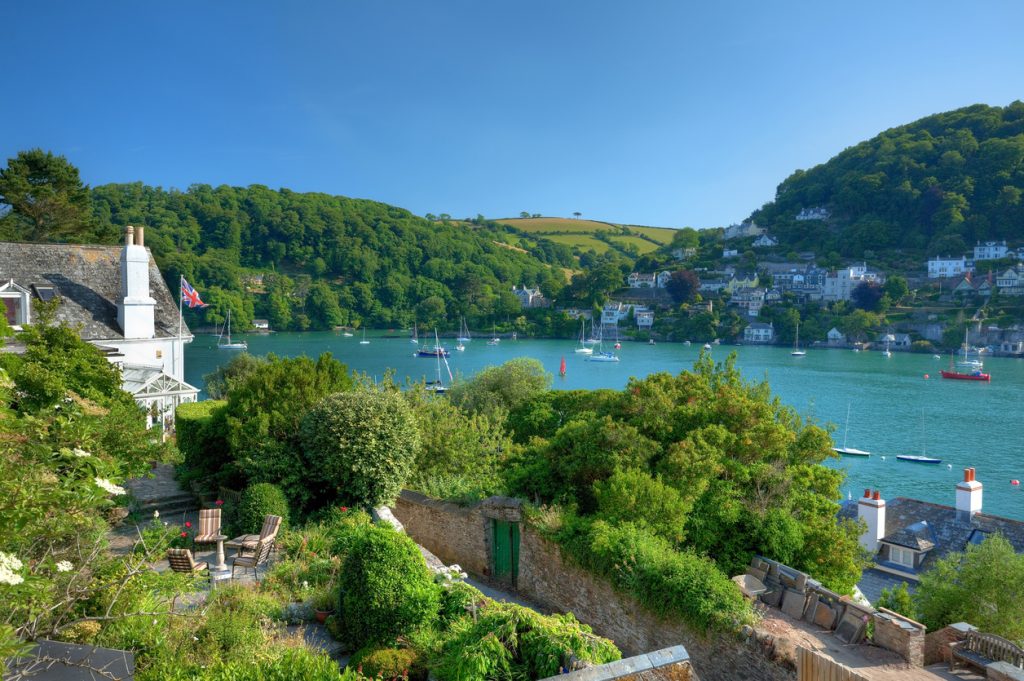
Bright and beautiful, Dartmouth sits on the end of the River Dart (hence the name).
It’s famous for its gently weaving river that traverses down to the beachside town.
It’s most famous for the grand Dartmouth Castle which dates back over 600 years. Work on it initially began in 1388, when the town was protected during the 100 years war with France.
It was also a place of fighting during the Civil War and operated in both World Wars.
The Britannia Royal Naval College Museum is also in town, located in an Edwardian building that acts as a living museum.
Dartmouth Museum focuses on the town’s history.
You’ll also find wonderful beaches, including the beautiful Castle Cove and Sugary Cove.
From Dartmouth, you can take boats up the River Dart to Totnes, or you can venture to two National Trust properties, Coleton Fishacre House and Greenway House, which is where famous novelist Agatha Christie lived.
20. East Prawle

One of the most isolated places in South Devon, East Prawle is a small, remote village that’s close to Prawle Point, the most southerly tip of Devon.
Expect rugged cliff scenery, plenty of fresh sea air and lots of farmland – in fact, this part of Devon is actually called ‘pig country’ due to the sizable farming industry in the area.
In fact, the only pub in town is the Pigs Nose, a classic country pub serving hearty dinners and local ales.
In keeping with the piggy theme, you’ll also find The Piglet Cafe, which serves slap-up breakfasts and pasties for lunch.
Find deserted beaches (Lannacombe Beach is a 15 minute drive or short walk along the coast path away), or enjoy this particularly remote area of the South West Coast Path, in blissful solitude.
21. Salcombe

Small but mighty, Salcombe sits on the Kingsbridge Estuary.
A beautiful harbour town, it’s in a prime position for watersports, boating and scenic coastal walks along the river and coastline.
Take a walk around the scenic coastal town to take in the independent shops, head to the Salcombe Gin School (their drinks are incredible!) and try some ice cream at Salcombe Dairy.
While Salcombe doesn’t have a huge amount of attractions right in the town, it’s one of the most beautiful towns in Devon and is ideal if you want beachy staycation vibes in the UK!
22. Hope Cove
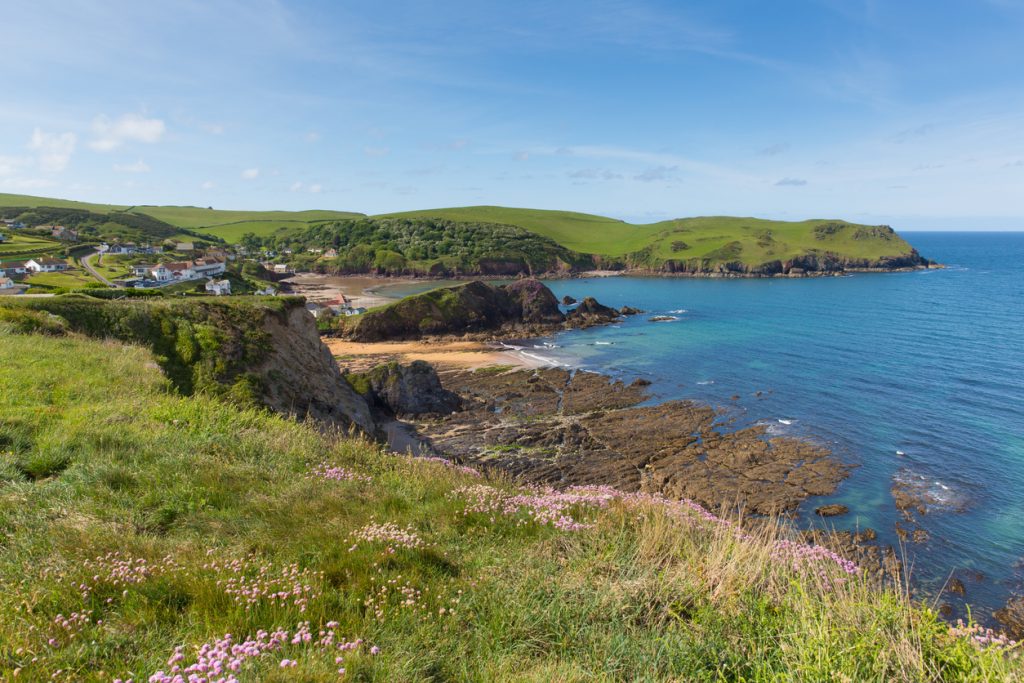
In the midst of the South Devon AONB (and when you visit, you’ll see why!) Hope Cove is a tiny village that’s made up of two beaches.
It may be remote, but it’s one of the most scenic places in Devon, with gorgeous cliffs jutting out to the sea, the bright green sand contrasting with the blue water.
There are a few places to eat in town, many lining the coastline.
I love The Cove (which calls itself the UK’s best craft beer bar), which is set just back from the shore. It serves up slap-up pub grub meals – I feasted on vegan fish and chips when I was here!
23. Bigbury-on-Sea
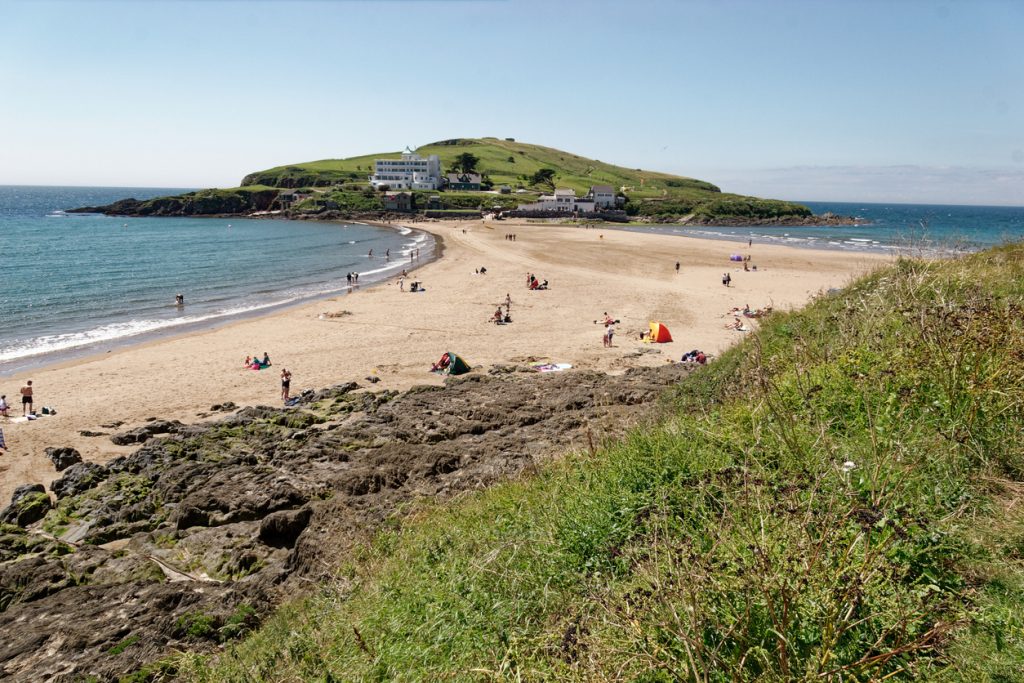
Home to one of the county’s largest beaches (that has been ranked fourth best in England), Bigbury-on-Sea is the ideal Devon vacation spot.
The waters here are made for watersports – it’s one of the only places in South Devon where surfing is a real possibility. Kayakers and stand-up paddleboarders can often be seen on the water too!
Don’t miss Burgh Island, which is linked to Bigbury-on-Sea by a causeway (although when the tide’s in, you’ll need to take the sea tractor!).
It’s famous for its Art Deco hotel, Agatha Christie connections and beautiful wildlife.
Walk around the village or kick back in one of the pub gardens and toast to a wonderful holiday in South Devon!
24. Plymouth
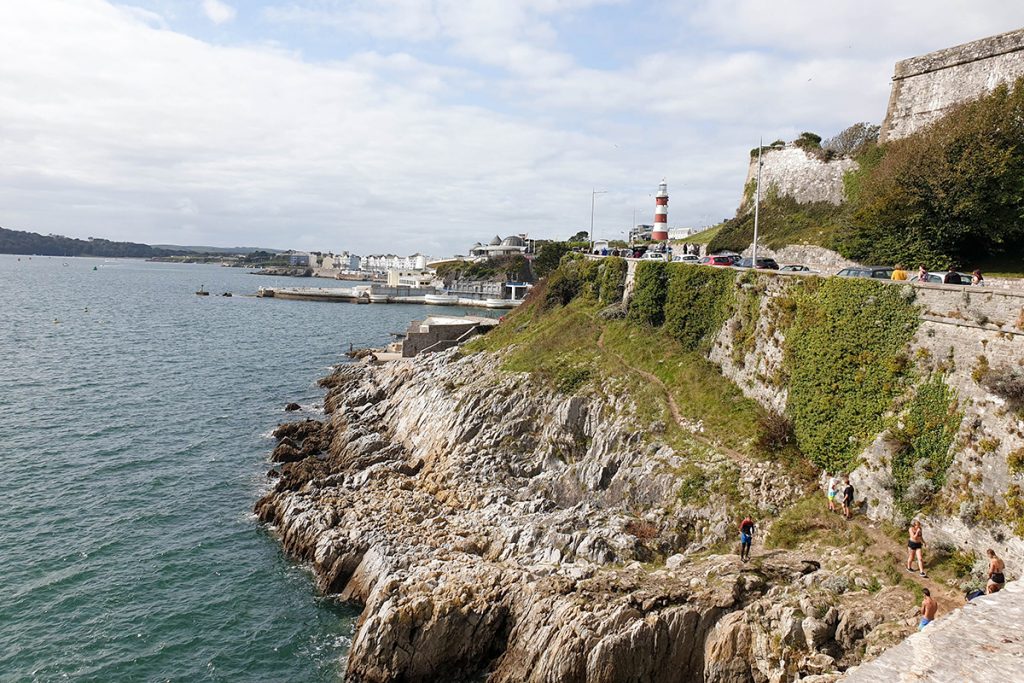
You’ve made it to Devon’s largest city!
Known as “Britain’s Ocean City”, Plymouth dates back to Saxon times, its location making it one of the most important maritime cities in the world.
It was here where the Spanish Armada was stopped, where Catherine of Aragon (Henry VIII’s first wife) first entered the country and where the Mayflower Pilgrims, the first European settlers in the so-called “new world” set off from in 1620.
The best of Plymouth is definitely by the waterfront, in the Hoe and Barbican areas. Walk around here for picturesque maritime views and fascinating 15th and 16th-century buildings, all of which tell their own stories!
There’s lots to do in Plymouth too.
Tour the Plymouth Gin Distillery, board a cruise ship on the Tamar to learn about the Devon/ Cornish border, visit the impressive Box Museum and learn about the fascinating Mayflower Voyage which set off from the city.
Just outside of the city, you can flop on some of the best beaches or hike on the South West Coast Path.
There are lots of other hikes around Plymouth, too!
It’s perfect for a weekend break!
25. Tavistock

I’m a big fan of Tavistock.
Sitting just on the cusp of Dartmoor, it’s an ideal place to base yourself if you want to explore all that the town has to offer but also be in striking distance to the moor’s best natural attractions.
In the town itself, you’ll find the Pannier Markets, a historic place to buy goods – although nowadays it’s mainly used for buying tourist-focused gifts!
There’s also the Church of St. Eustachius, which dates back to the 13th century. The light reflecting through the church’s stained glass windows is a spectacle!
Once you’ve left the church, find the ruins of Tavistock Abbey.
Like most other abbeys in the country, it fell into a ruinous state during the Dissolution of the Monasteries. Nowadays, you can only see parts of the foundations.
Nearby is Buckland Abbey. As the name suggests, this was also originally an abbey.
But during the Dissolution, it was turned into a Tudor Monastery, with Sir Francis Drake living there.
Back in Tavistock, there are plenty of cafes and restaurants to fuel up in before exploring the rest of Devon! I love Lemon Grove Cafe and the coffee at The Stranded Sheep.
26. Okehampton

Heading to the north edge of the moor, Okehampton is another wonderful moor-centric town!
It’s well-known for Okehampton Castle, which was built shortly after the Norman conquest of England to defend the region. Nowadays it’s managed by the English Heritage and is semi-ruinous, although there’s plenty still standing to explore!
The Museum of Dartmoor Life is also in town. Here, you can learn about the history and culture around the moor.
Being a country town, Okehampton has lots of local cafes and tearooms.
When I last visited, I had a hearty jacket potato in the traditional Victorian Tea Rooms by the museum.
You can also shop for local goods in the Okehampton Arcade or stay in town for the Okehampton Farmer’s Market which takes place every first and third Saturday of the month.
On the moors, you’re close to the Meldon Reservoir, High Willhays and Yes Tor.
You could also take a bus from Okehampton to Lydford Gorge and the scenic village of Lydford.
But of course, if you have a car, you can explore pretty much all of Dartmoor from Okehampton!
27. Dartmoor National Park
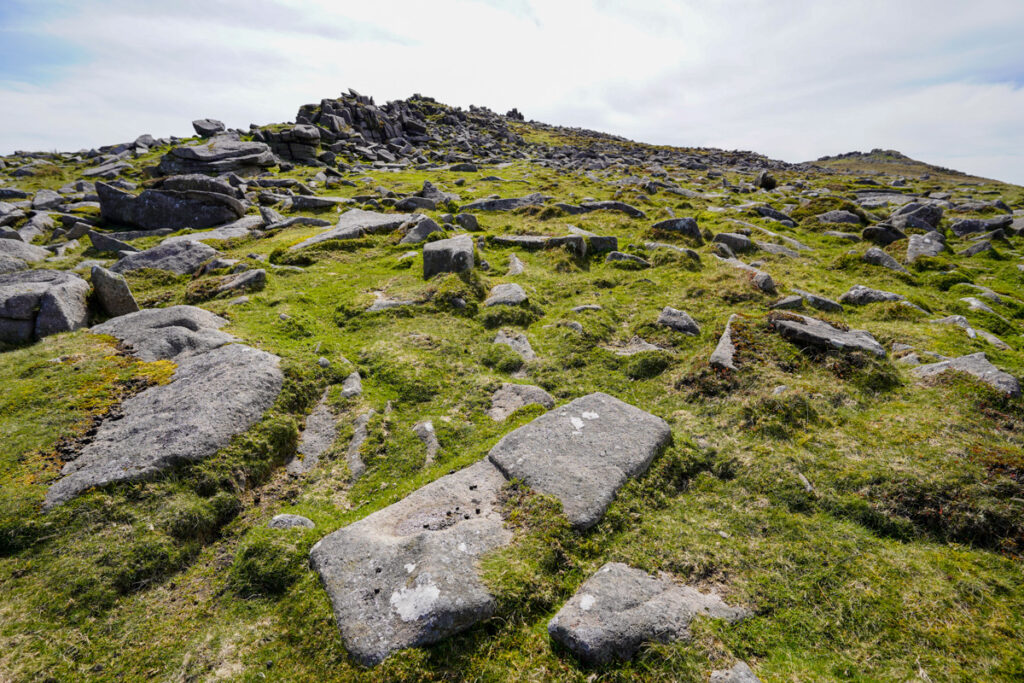
Of course, one of the best places to visit in Devon – and in all of the UK – is the glorious Dartmoor National Park!
The rolling moorland is an attraction in itself, but the landscape’s punctuated by a variety of interesting attractions.
Visit ancient sites like Grimspound and the Hound Tor Deserted Village, explore the moor’s many tors (hills with stones on top) or explore woodland and temperate rainforest.
Dartmoor National Park is home to Wistman’s Wood (which looks like the Forbidden Forest from Harry Potter!) and the charming Lydford Gorge. Becky Falls is another wonderful waterfall!
There’s also an abundance of historical attractions, including the Dartmoor Prison Museum and Castle Drogo which was the last castle to be built in the UK.
Charismatic towns and villages are dotted over the moor, such as quaint Chagford, Ashburton which is famous for its antique shops and the surreal Widecombe-in-the-Moor, which is enclosed in moorland.
Here’s my full guide to the best things to do in Dartmoor.
28. Hartland Quay
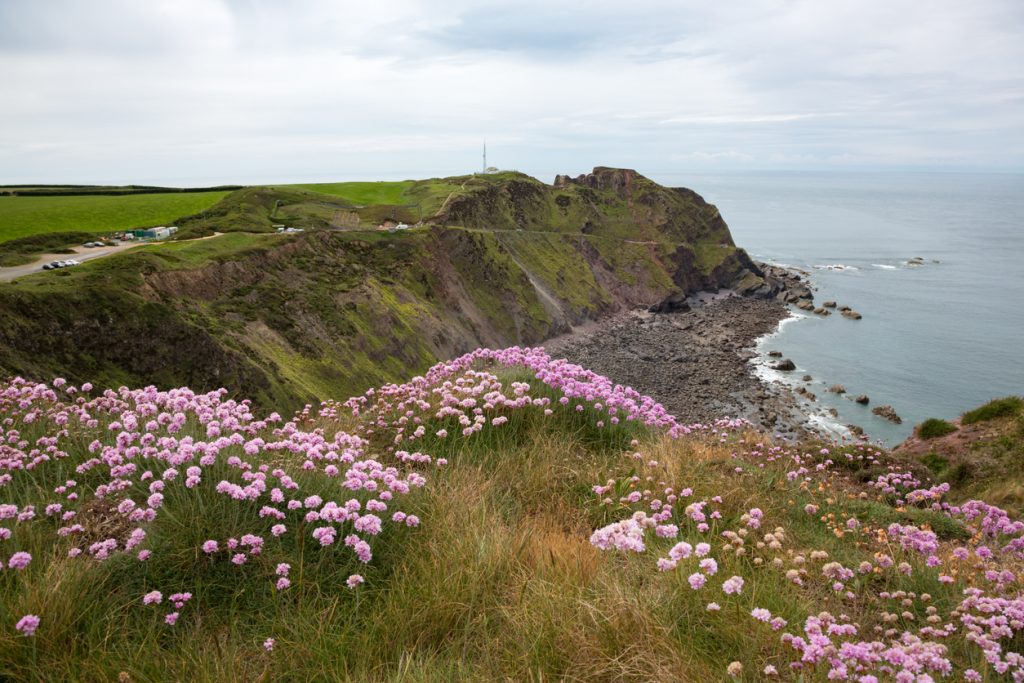
Moving onto North Devon, one of the most remote yet fascinating places to visit is Hartland Quay, which is a stone’s throw from the Cornwall border.
Once a bustling harbour, Hartland Quay is now a deserted area on the cliffs, just a little north of the tiny village of Hartland.
At the Hartland Quay Museum, you can explore the history of the quay.
It has been the setting for numerous films, including Rebecca which was released in 2020.
It’s also a dreamy place for epic North Devon walks, such as the Hartland Quay to Bude walk.
This hike spans into Cornwall and is (in my opinion) the toughest walk on the South West Coast Path – but its isolation and brooding cliffs mean it’s also one of the most spectacular!
29. Clovelly

The picture-perfect village of Clovelly is one of the most talked-about fishing villages in the UK.
It’s one of the most tourist-focused places in Devon, with most visitors to the north of the county popping in – but they all pay for the privilege.
That’s right; it costs £8.75 for adult entry to Clovelly (price updated for 2023).
So, is it worth it?
It’s a mesmerising fishing village, with traditional buildings lining cobblestone streets.
Your ticket also includes entry to Clovelly’s attractions, including the Fisherman’s Cottage which resembles a cottage from the 18th century and the Kingsley Museum which celebrates local novelist Charles Kingsley.
The views down to the quay are breathtaking – and you can walk down to the quay itself, plus venture along the beach and try to find Merlin’s Waterfall.
While there are lots of similar fishing villages in Devon and Cornwall that are free to visit (such as Port Isaac and Mousehole), none are as well preserved as Clovelly – but it is also very much a tourist town, with few people actually living there.
You can stay the night in Clovelly – we once stayed in the picturesque Harbour View Cottage – and if you stay in town, you don’t need to pay the entrance fee.
You also don’t need ot pay if you walk in on the South West Coast Path, as by doing so you’ll bypass the visitor’s centre.
Read all about the best things to do in Clovelly here.
30. Westward Ho!

Looking for somewhere to spend a beachy holiday in North Devon? Westward Ho! might be your answer.
The only town in the UK with an exclamation mark after its name (and one of only two in the world), Westward Ho! only dates back to the 1860s, when it was created as a holiday resort and named after Charles Kingsley’s book of the same name.
The exclamation mark is part of its official name!
Nowadays, it’s a popular town for surfing, watersports and lazing on the beach – the two miles of golden sand (with some shingle and pebbles) stretch along the North Devon coastline.
The Northam Burrows Country Park, which is an SSSI and golf course, sits at one end.
Family-friendly activities in town include crazy golf and go-karting.
See all of Westward Ho!’s attractions here.
31. Appledore

Appledore can get quite busy in the summer months, but it retains a charming, small-village feel (despite all the holiday homes!) and I always recommend it as a must on any North Devon itinerary.
Walk down the colourful Irsha Street, famous for its pastel coloured terraced cottages, to reach Appledore Quay.
Here, you can enjoy views over the River Torridge to Instow.
There’s a ferry that connects the two in the summer months, or you can follow the South West Coast Path on the Instow to Westward Ho! walk, which passes through Appledore.
Appledore has a few excellent pubs in town, including The Seagate – also a beautiful place to stay – and The Beaver Inn.
Its riverside location and relaxed feel make it the ideal spot to spend a lazy afternoon or evening!
32. Woolacombe

Next, I give you the best beach in the UK!
Yes, Woolacombe Beach has been voted so (on numerous occasions) – and it’s also been dubbed the best in the world.
This was thanks to not only its scenery, but also its water quality and safety.
However, Woolacombe is also one of the best places for surfing in Devon, sitting right in the heart of the North Devon surfing reserve.
There are plenty of schools in Woolacombe and nearby Croyde if you’d like to try your hand at the sport!
Other things to do in Woolacombe include hiking around Baggy Point or Morte Point (which bookend the beach), visiting Mortehoe and its interesting museum which focuses on shipwrecks, treatments at The Alchemist Spa and beach-hopping.
However, there are lots of things to do in the area, including the nearby village of Croyde, which has an excellent dining scene, and plenty of other sandy beaches!
33. Barnstaple

Barnstaple, the largest town in North Devon, dates back to 930 AD and is steeped in history.
It’s not coastal, which means that it doesn’t get the same amount of visitors as North Devon’s seaside villages, but there’s plenty of culture and history to delve into here!
Uncover its rich past at the Museum of North Devon and see its interesting Long Bridge which dates back to the Medieval era.
Barnstaple has some vibrant Pannier Markets, and Arlington Court and National Trust Carriage Museum is on the town’s outskirts.
Barnstaple’s also on the scenic Tarka Trail, a cycling and hiking trail that spans parts of the South West Coast Path bus also ventures inland to the Taw and Torridge Estuaries.
Check out all of the best things to do in Barnstaple by clicking here.
34. Ilfracombe
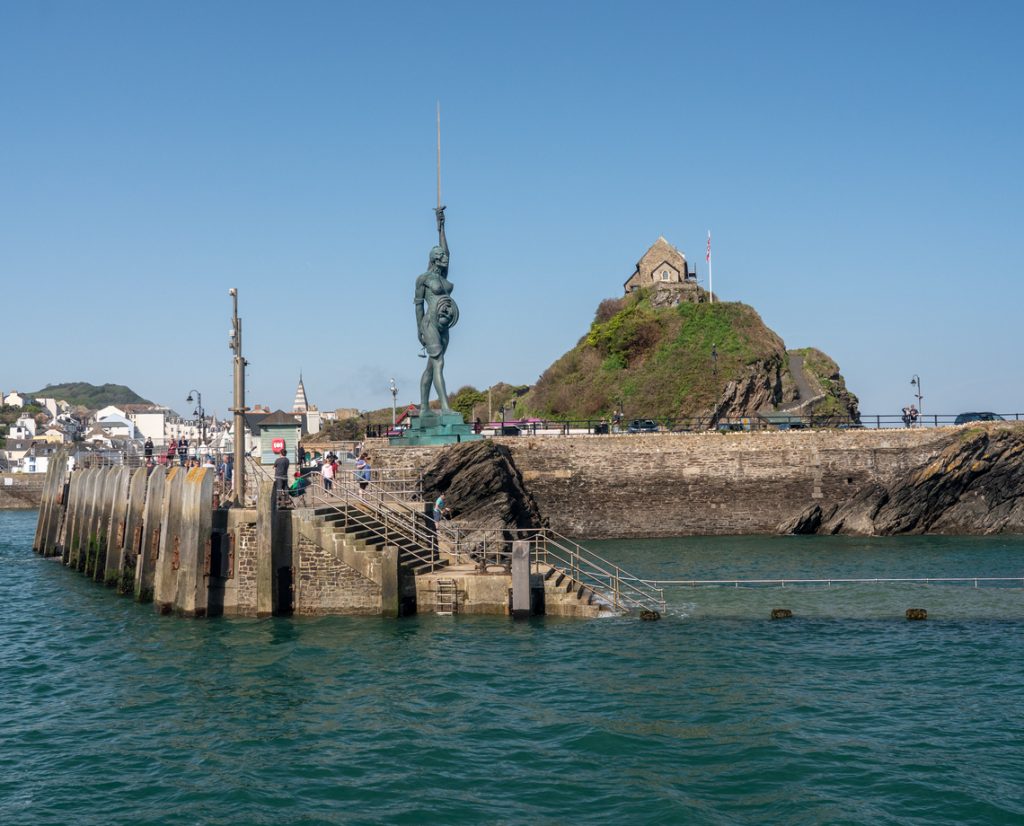
A stunning coastal town nestled between Woolacombe and Exmoor National Park, Ilfracombe is renowned for its charming beaches all centered around its historic harbour.
It’s the base of Ilfracombe Sea Safari, which offers thrilling boat tours towards Exmoor or Woolacombe, with the chance to spot seals en route.
As Ilfracombe is nestled in cliffs, you can take in glorious views from the top of Capstone Hill or Forthglade, perhaps hiking to Woolacombe or Combe Martin.
Ilfracombe’s many beaches include the privately-owned Tunnels Beaches which were created in the Victorian era to access some of the more remote bays, along with the gorgeous Wildersmouth Beach.
The town centre has a few excellent eateries and ice cream shops – I’d recommend grabbing your food to take away and enjoying it on the harbour, just watch out for seagulls!
Check out the best things to do in Ilfracombe with my full guide to the town.
35. Lundy Island
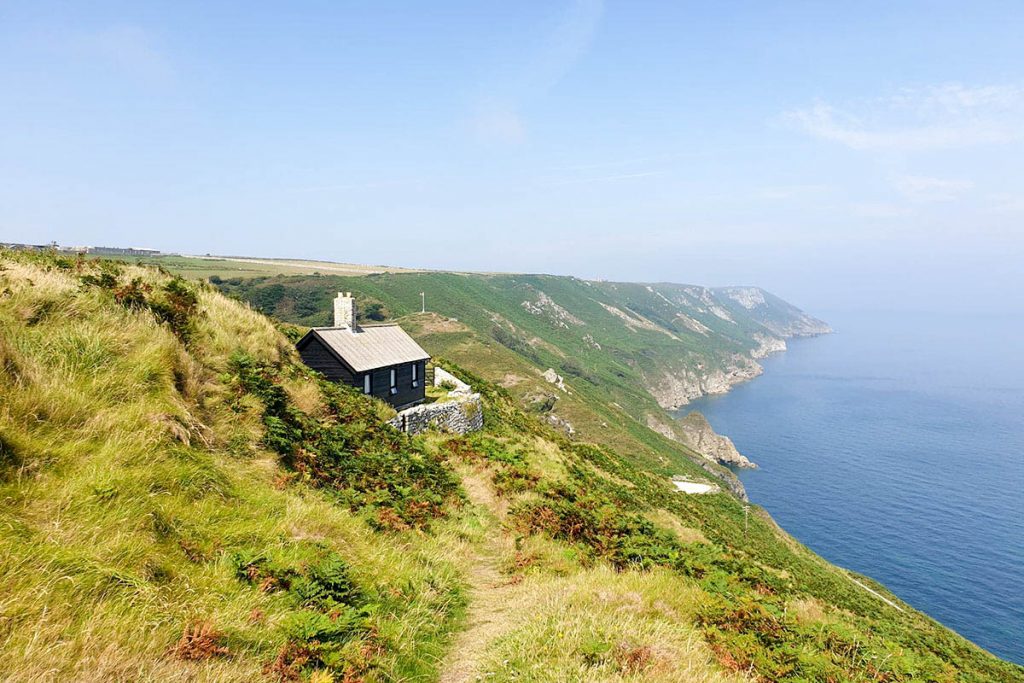
One of the most incredible places to visit in Devon – and one of my favourite places in the world – no trip to the north of the county should miss this gem out!
A weathered island sitting where Bristol Channel and Atlantic Ocean meet, Lundy’s home to a menagerie of wildlife, including seals, puffins and ponies.
It’s also oozing with history – you can do a ranger-led tour to learn about its connections to pirates and smugglers over the years.
Go snorkelling on the beaches (you can even swim with seals) or hike around the island. Head to the top of The Old Light and toast to a day’s sightseeing on the islands only pub, the Marisco Tavern.
Lundy’s also home to the oldest private post system in the world, and you can make use of this by sending a postcard while you’re here.
You can visit Lundy by hopping on the MS Oldenburg from Ilfracombe – here’s my detailed post about taking a day trip to the island.
36. Combe Martin
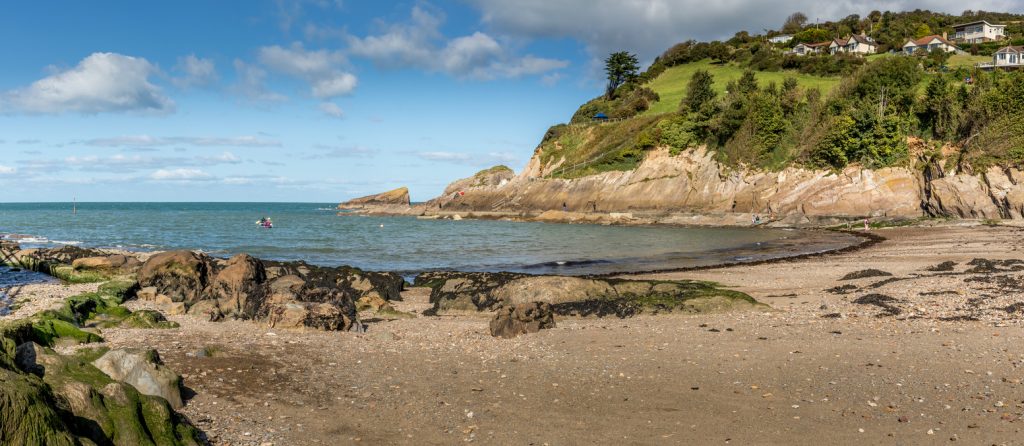
A small beach town on the edge of Exmoor National Park, Combe Martin is a secluded bay and small village.
Holidays in Combe Martin are mainly based around the beach – it’s a fantastic place for watersports – but you could also while away a day in the Focsle Inn beer garden, which overlooks the sands.
Or, head to the Combe Martin Wildlife and Dinosaur Park, a small zoo and kid’s attraction focused on prehistoric animals. There’s also Watermouth Castle, which is a castle-turned-theme park, ideal for families!
Adults can enjoy scenic hikes along this particularly beautiful stretch of coastline or its proximity to the glorious Exmoor.
37. Lynton and Lynmouth
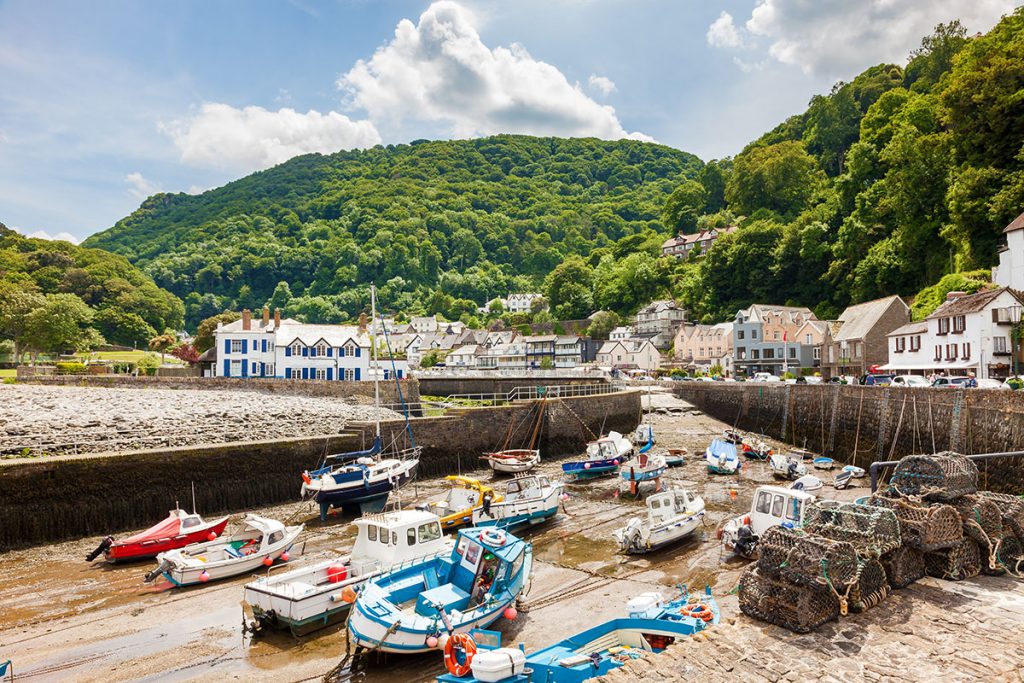
Sitting in the midst of the Devonshire part of Exmoor, Lynton and Lynmouth are two twin villages.
They’ve been called the “Switzerland of Devon” due to their position in the scenic hills (although the person who thought of this name seems to have forgotten that Switzerland is landlocked, and Lynmouth is very much coastal!).
The villages are home to the Lynton-Lynmouth cliff railway, which is the only water-powered funicular in the country and the Valley of Rocks, an interesting cliff walk with rocks dating back to the last ice age.
This is Coleridge country, and from the Valley of the Rocks you can walk the poet’s route back down into Lynmouth.
Back in town, visit the Flood Memorial Hall to learn about the catastrophic 1952 floods and the impact they had on the town, and visit the Lyn Model Railway, featuring a LNER (London & North Eastern Railway) model from 1935 – 1940.
See all of the things to do in Lynton and Lynmouth here.
38. Exmoor National Park

Devon’s other national park, Exmoor, is where rolling moorland meets the sea.
Most of the park is actually in Somerset, but the western side is in Devon.
Along with villages like Combe Martin and Lynmouth, here you can hike along the coastline (although, a warning – it’s tough) to Porlock in Somerset. Here’s my Porlock to Lynmouth walking guide.
Dunkery Beacon is Exmoor’s highest point and although it’s over the border in Somerset, it’s a great shorter hike!
Also in the Somerset part, you’ll find the charming villages of Dunster (home to Dunster Castle) and scenic Watchet.
39. Tiverton
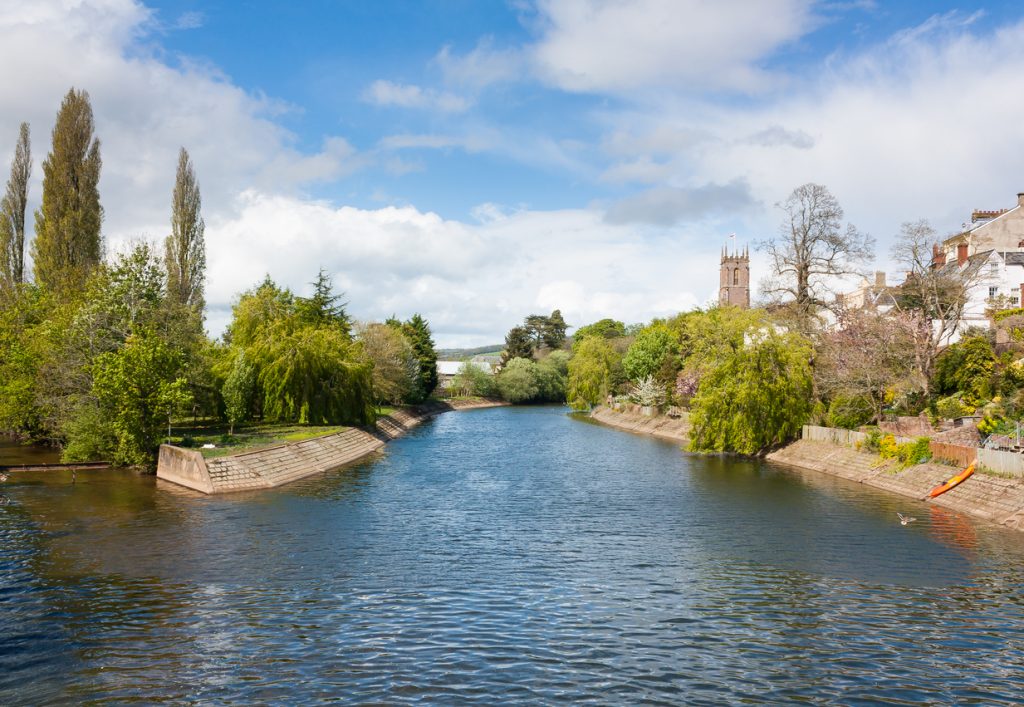
The least-visited part of the country, Mid-Devon has a few small towns that are worth stopping in.
Tiverton is packed with chances to experience local life; and while it doesn’t see that many tourists, it has an impressive array of historical attractions.
Visit Tiverton Castle, which dates back to 1106, or the nearby Medieval Bickleigh Castle.
The National Trust property Knightshayes Court is also nearby.
On the outskirts of Tiverton, you can enjoy the Grand Western Canal and its 24 bridges!
40. Crediton
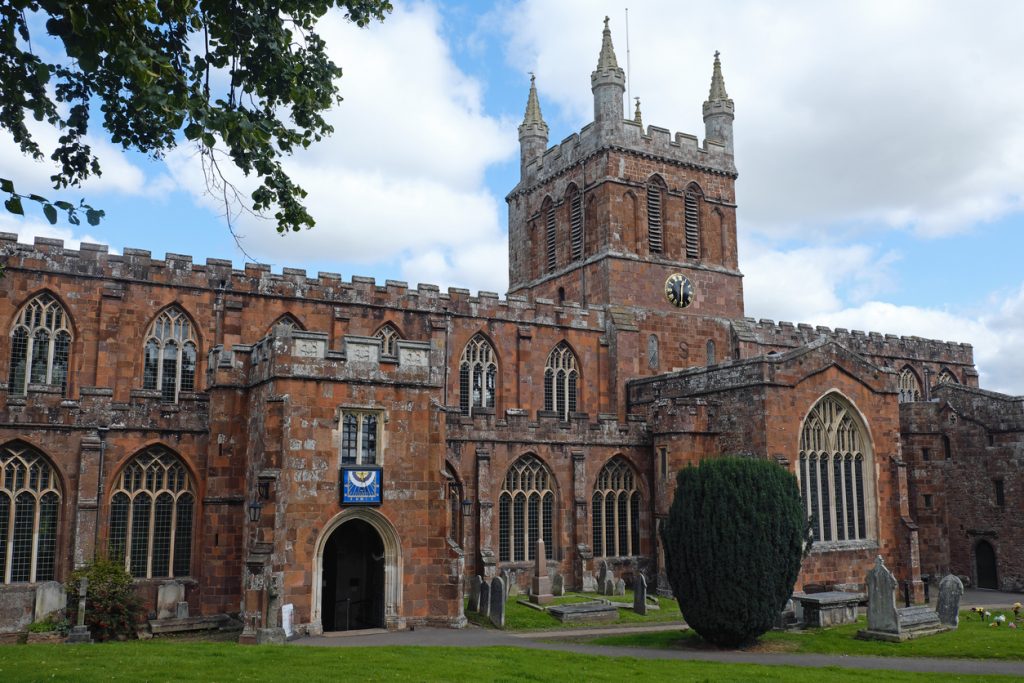
Crediton is another historic market town, just north of Exeter, with the impressive Holy Cross Church, which stands on the site of Devon’s first Saxon Cathedral.
The patron saint of Germany, Boniface, was born here in 680 AD.
He was educated in Exeter and eventually killed in Europe by being stabbed while he was reading the bible. He’s often immortalised in images by holding the bible through a shield!
Boniface has made Crediton a popular place for German tourists to visit in Devon, although it’s also worth visiting for its many independent shops and farmer’s market which is on the first and third Saturdays of every month.
Are you ready to visit the best places in Devon?
From the cliffs of the Jurassic Coast to the rolling hills of Dartmoor to the powdery white sands of the North Devon surfing reserve, there are so many wonderful places to visit in Devon!
Check out the rest of my Devon posts to help you plan your ideal trip to the South West!

